Xiaomi Smartphone Statistics By Market Share And Trends (2025)

Updated · Aug 13, 2025

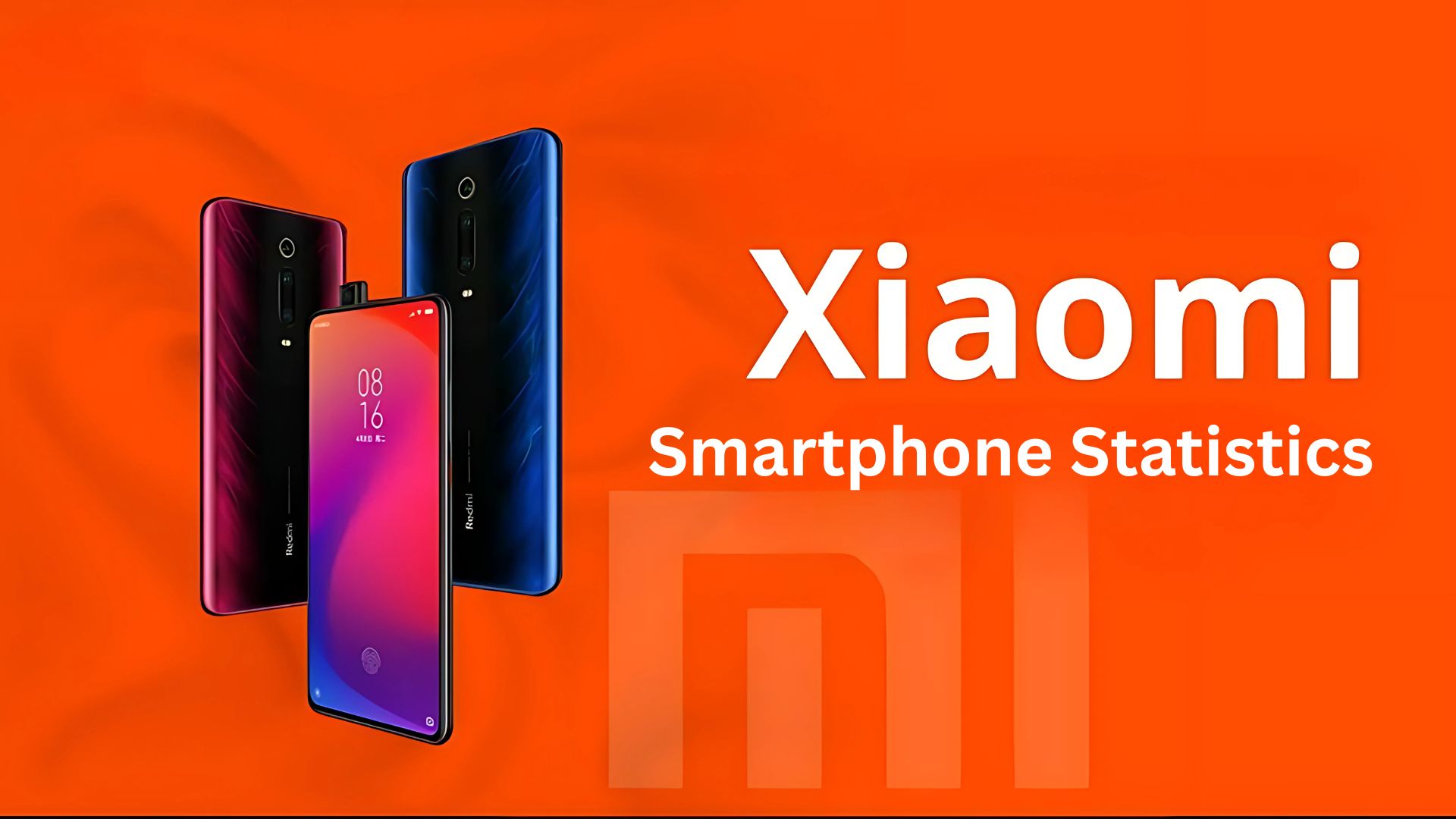
WHAT WE HAVE ON THIS PAGE
- Introduction
- Editor’s Choice
- Xiaomi Origin and Early Growth
- Global Shipments and Market Share
- China Market Comeback
- Q1 2025 Global Financial Performance
- India Market Woes in Q1 2025
- India’s Recovery in Q2 2025
- Operating Systems and Software Direction
- R&D and Development Push
- Ecosystem and IoT Growth
- Future Outlook and Strategy
- Conclusion
Introduction
Xiaomi Smartphone Statistics: If you’ve ever wondered how big Xiaomi is or why it’s always in the top 3 when it comes to smartphone brands, this one’s for you. In this article, I’m going deep into Xiaomi Smartphone Statistics, covering everything from how the company started in a tiny Beijing apartment to how it’s now building electric cars and designing its own chips.
We’re not just talking fluff here. I’m breaking it all down, all centered around Xiaomi’s journey, market share, best-selling models, software user base, and even what’s coming next. Whether you’re a smartphone geek, a Xiaomi user, a tech writer like me, or just someone who wants to know how this brand competes in the market, I’ve got it covered.
From dominating markets like India to entering the EV game with the SU7, Xiaomi’s growth story is just really insane. And yeah, it’s not perfect; there’ve been ups, downs, and a fair share of controversies. So, if you’re ready to dive into these Xiaomi smartphone statistics, you will get the full picture. Let’s get started.
Editor’s Choice
- Xiaomi started in 2010 with Lei Jun and a small team, launching MIUI before even getting into hardware. Their first smartphone came out in 2011 and sold out in 3 minutes.
- As of 2024, Xiaomi holds the 3rd largest global smartphone market share, shipping around 6 million smartphones worldwide.
- In terms of revenue, Xiaomi generated $37.5 billion in 2024, with over 60% of that coming from smartphones
- Their most successful models include the Redmi Note 13, POCO X5, and Xiaomi 14 series, which together helped them maintain their spot in emerging and budget markets.
- The company’s MIUI software, which is now replaced by HyperOS, reached over 600 million active users across over 200 countries.
- India used to be Xiaomi’s strongest market, but due to regulatory pressure and market saturation, they’ve slightly fallen but is working to recover.
- In offline expansion, Xiaomi now has over 10,000 Mi Stores globally, with a special focus on Southeast Asia, Africa, and Latin America.
- They’ve put heavy investment into R&D, spending $3.7 billion in 2024 alone, which is a 24% increase from the year before.
- With the launch of the Xiaomi SU7 electric car, Xiaomi is no longer just a smartphone company; they’re entering EVs, smart homes, and chip development.
- Looking ahead, Xiaomi plans to build its chipsets (XRING series), shift more focus on AI integration, and compete with the likes of Apple and Samsung not just in specs but in ecosystem value.
| Topic | Quick Summary |
| Foundation |
Started in 2010, the first phone in 2011, MIUI OS came first |
|
Global Ranking |
3rd globally with 181.6M units shipped in 2024 |
| Revenue (2024) |
$37.5 billion total, 60% plus from smartphone sales |
|
Best-Selling Models |
Redmi Note 13, Xiaomi 14, POCO X5 |
| Software Base |
Over 600M MIUI users before switching to HyperOS |
|
Indian Market |
Still dominant but saw some drop, aiming for revival |
| Retail Expansion |
10K plus Mi Stores worldwide, growing in emerging offline markets |
|
R&D Budget |
$3.7 billion in 2024, growing yearly |
| EV Strategy |
Xiaomi SU7 car, YU7 SUV coming, entering smart mobility |
|
Future Focus |
Chip design (XRING), AI-first OS, premium push, full ecosystem strategy |
Xiaomi Origin and Early Growth
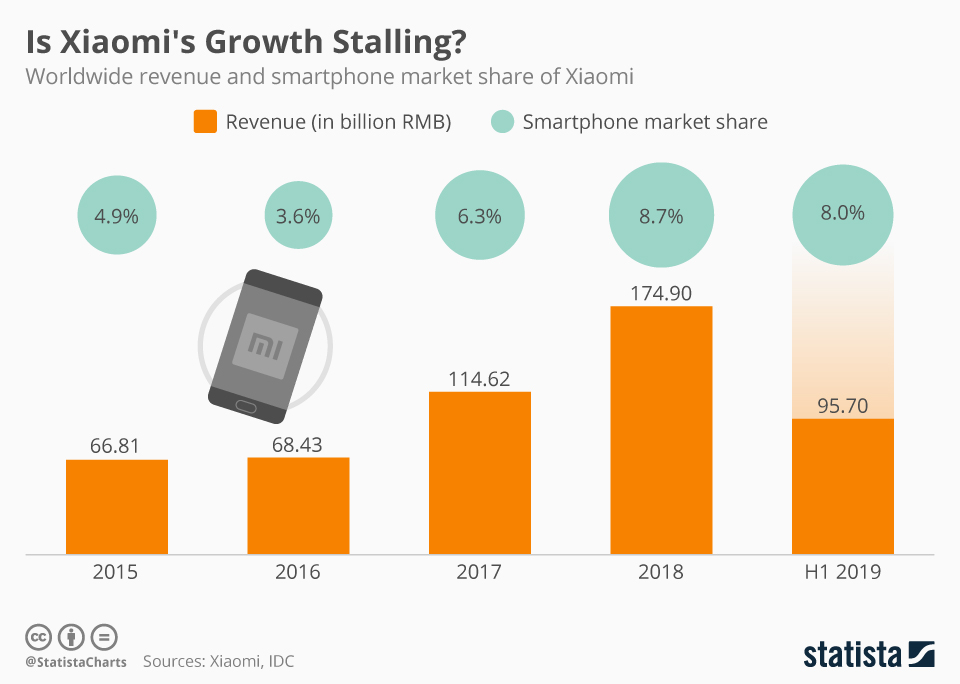
- Xiaomi began its journey in 2010 in Beijing, starting as an “online only” flash‑sale company that sold out its early phones in minutes.
- In the first couple of years, they gathered a fanbase of over a million “Mi fans” who basically buzzed the site whenever a flash sale dropped.
- By 2014, Xiaomi had expanded into India, riding the Redmi budget series, and quickly became a household name by undercutting the competition.
- Around 2015, they broke into the global top‑5 smartphone shippers kind of crazy growth in just five years.
- It kept its hardware margins low initially, making money more on software, ads, and services than on the phones themselves.
- Fast forward a decade, and semi‑annual growth skyrocketed after branching into smart appliances, IoT, and ecosystem devices.
- The mix of smartphones and IoT stuff became a killer combo, offering recurring revenue from apps and services across connected devices.
- Flash‑sale roots still helped them stay lean in the supply chain, clearing inventory fast before piling up too much margin pressure.
- Even now, their mantra is premium tech at accessible prices, especially with models like the Xiaomi 15 Ultra pushing ASP up while staying relatively affordable.
- Over time, Xiaomi kept layering more sub‑brands (Redmi, POCO), more services, and more devices to build a sprawling value‑for‑money empire.
| Year/Phase | Key Insight |
| 2010 to 2015 | Flash‑sale growth, online buzz |
| Around 2014 | India expansion via Redmi |
| Mid‑2010s | Top‑5 global shipper |
| Now | Ecosystem plus services equal recurring value |
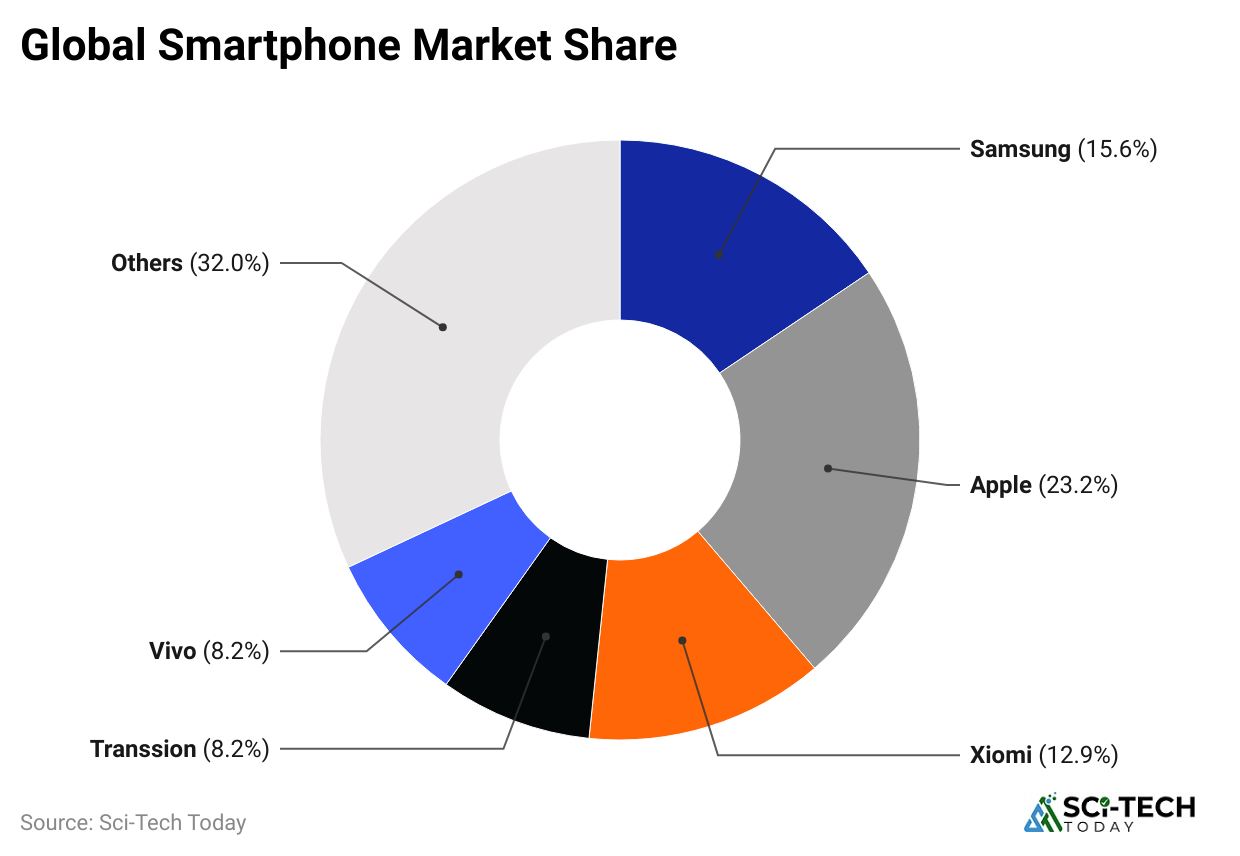
- In 2024, global smartphone shipments grew by around 6 percent, with Xiaomi being one of the fastest growers among big names.
- Xiaomi shipped roughly 168 million units in 2024, grabbing about 13.6 percent share of the global pie.
- That put it in third place worldwide, behind Samsung and Apple, but still firmly in the top‑tier league.
- According to some trackers, Xiaomi grew sales by 12 percent in the year, the strongest among the big players.
- In early 2025, Q1 saw Xiaomi ship about 41.8 million units, holding around 14.1 percent of global smartphone share.
- Not a one‑off thing, they’ve been top‑3 global shippers for about 19 quarters in a row.
- That’s weeks and months of holding ground in the big league, despite heavy competition everywhere.
- Aggressive 5G push helped; Xiaomi scored the highest year‑on‑year growth in 5G shipments among majors.
- Their price strategy values flagship and budget 5G for living in emerging markets like India, LATAM, and Africa, pushing numbers.
- The global competition space around 2025 is shaped by AI features and affordable 5G, not foldables. Xiaomi fits that trend nicely.
| Year / Period | Shipments and Share |
| 2024 (annual) | 168.5M units, 13.6% share |
| Q1 2025 | 41.8M units, 14.1% share |
| Global Trend | Top‑3 consistent, fastest 5G growth |
China Market Comeback
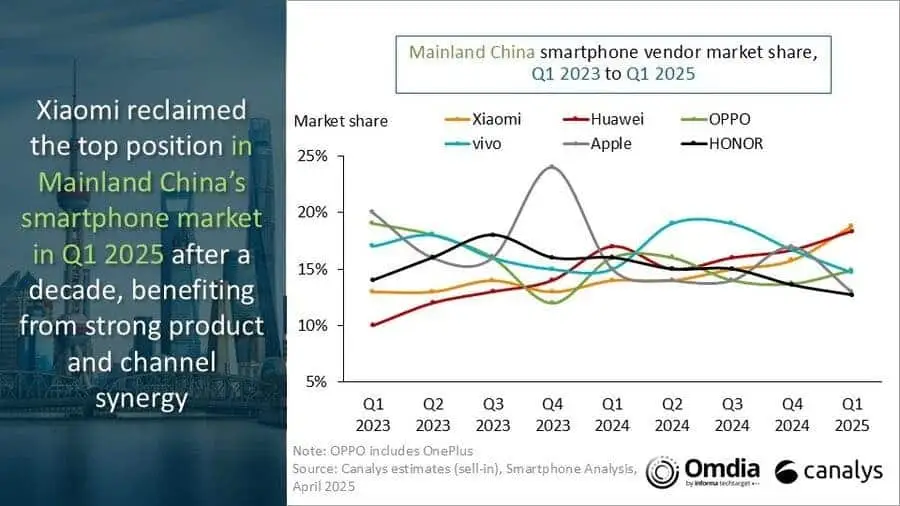
- In Q1 2025, Xiaomi clawed back into the number‑one spot in China with an 18.8 percent share, up nearly 5 points year‑on‑year.
- That’s huge in the world’s toughest smartphone market, beating back Vivo, OPPO, and Huawei’s presence.
- The premium push worked; devices priced above 3000 RMB accounted for 25 percent of Xiaomi’s volume, and above 4000 RMB gave it almost 10 percent share.
- Flagship like Xiaomi 15 Ultra sold 90 percent more than the previous generation, whatever made sense clicked with buyers.
- ASP for their phones jumped to around 1211 RMB, hitting a record high.
- All this in Q1 2025 means Xiaomi went from a value‑brand tag to premium‑play in China.
- It also reflects more offline stores/hundreds opened early in 2025 to ramp retail presence.
- Their dual brand strategy helped Xiaomi for high‑end, Redmi for volumeplaying like two lines that don’t step on each other.
- A few years back, India was their stronghold; now they reclaimed China, so they’re rocking in the two biggest markets.
- Overall, it’s a return of respect from Chinese consumers who might’ve drifted to Vivo or Huawei; now Xiaomi matters again.
| Metric | Value |
| China Q1 2025 Share | 18.8% (back to No.1) |
| Smartphone ASP | 1211 RMB |
| Premium (>4000 RMB) Share | 9.6% of shipments |
Q1 2025 Global Financial Performance
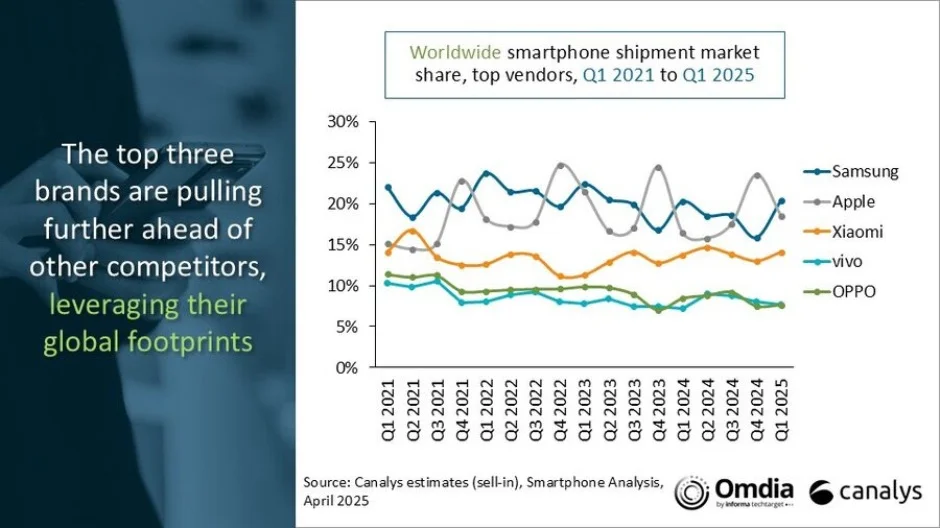
- Xiaomi reported revenue of 111 billion RMB in Q1 2025, a stout 47 percent increase over a year earlier.
- Net profit more than doubled to around 10.9 billion RMB, a record margin performance, basically.
- The smartphone business alone made 50.6 billion RMB, up nearly 9 percent, driven by a higher share in China and steady global demand.
- Internet‑of‑things and lifestyle products (like air‑cons, TVs, wearables) generated 32.3 billion RMBup nearly 59 percent.
- That segment’s gross margin jumped too, breaking records around 25 percent.
- Meanwhile, EVs and new initiatives whipped up 18.6 billion RMB in revenue, with a healthy 23 percent gross margin.
- SU7 EV deliveries hit around 75,800 in Q1, with cumulative SUV units past 258,000 since launch, so the EV side is scaling quickly.
- Their EV network includes about 235 sales centers across 65 cities now, spreading fast.
- Xiaomi’s investors liked the storyshares climbed nearly 50 percent YTD, confident in their premium pivot.
- And the smartphone‑AIoT engine (phones plus smart devices) made around 92.7 billion RMB, showing how the ecosystem pays recurring dividends.
| Segment | Q1 2025 Revenue and Growth |
| Total Revenue | 111B RMB ( plus47%) |
| Smartphone Business | 50.6B RMB ( plus9%) |
| IoT & Lifestyle | 32.3B RMB ( plus59%) |
| EV & New Initiatives | 18.6B RMB (23% gross margin) |
India Market Woes in Q1 2025
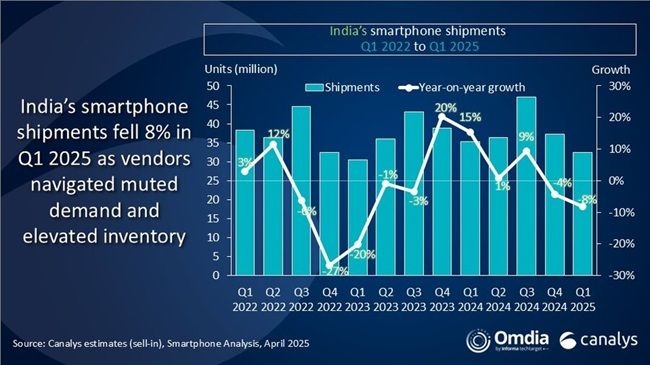
- India’s smartphone shipments dropped by about 7 percent in Q1 2025, hit by slow demand and high inventory.
- Xiaomi took the hardest shipments fell nearly 37 to 38 percent year‑on‑year, dropping share from 19 percent to around 13 percent.
- That plummeted Xiaomi to 4th place in India, behind Vivo, Samsung, and OPPO, which held steadier.
- Xiaomi shipped only about 4 million units in Q1 there, compared to roughly 6.4 million a year earlier.
- The Redmi Note 14 series launch didn’t catch fire, and channel sentiment stayed cautious, though Redmi 14C 5G provided some buffer.
- Value‑segment (₹7k to ₹25k) demand dropped 6 percent while premium and ultra‑budget saw growth, showing shifting consumer preference.
- Vivo surged with a 20 to 22 percent share, using Y/T‑series 5G popularity, while Samsung still held around 17 to 18 percent.
- Xiaomi’s revenue in India dropped even more, and wholesale smartphone revenue plunged roughly 45 percent YoY in the Mar quarter.
- So, despite a global and China comeback, India became a tough nut for Xiaomi in early 2025.
- The mix shows how uneven global performance can be, doing well elsewhere, but struggling in your second‑largest market hurts.
| Metric | Q1 2024 vs Q1 2025 (India) |
| Shipments Drop | 38% decline (6.4M to 4M units) |
| Market Share | 19% to 13% (slipped to 4th place) |
| Revenue Drop | 45% plunge in wholesale revenue |
India’s Recovery in Q2 2025

- India bounced back in Q2 2025. Shipments grew 7 to 8 percent YoY to around 39 million units, lifted by fresh launches and easing inventories.
- Xiaomi shipped about 5 million units in Q2, taking roughly 13 percent share, but that still put it in 4th or 5th place, depending on the tracker.
- Vivo led with around 8.1 million units (21 percent share), Samsung held 16 percent, OPPO close behind, and Xiaomi tied with OPPO in volume.
- Market value rose even moreIndia’s smartphone market grew 18 percent in value in Q2, meaning more premium or bigger ticket phones were sold.
- Xiaomi’s recovery was modestthey pushed Redmi 14C 5G, A5, and refreshed Note 14, but momentum was slower than Vivo’s aggressive campaigns.
- Vivo thrived via tier‑2 and 3 retail pushes and “wedding season” retail campaigns, while Xiaomi stayed slightly cautious.
- Apple also picked up steam, becoming a top‑5 brand in volume and doing well in value share on iPhone 16 family demand.
- The Indian market is more promotional and channel‑driven discounts, EMI offers, and finance deals pushing volumes in Q2.
- Xiaomi didn’t snap back fully but regained stability compared to the Q1 meltdown. Still, a 13 percent share is below their heyday.
- The recovery signals India is cyclical, but Xiaomi needs better retail activation and product timing to reclaim its lead.
| Quarter | Xiaomi Q2 2025 vs Trend |
| Shipments | 5M units, 13% share |
| India Growth | Plus 7% volume, plus 18% in value |
| Position | Tied 4th/5th, not bounced to the top yet |
Operating Systems and Software Direction
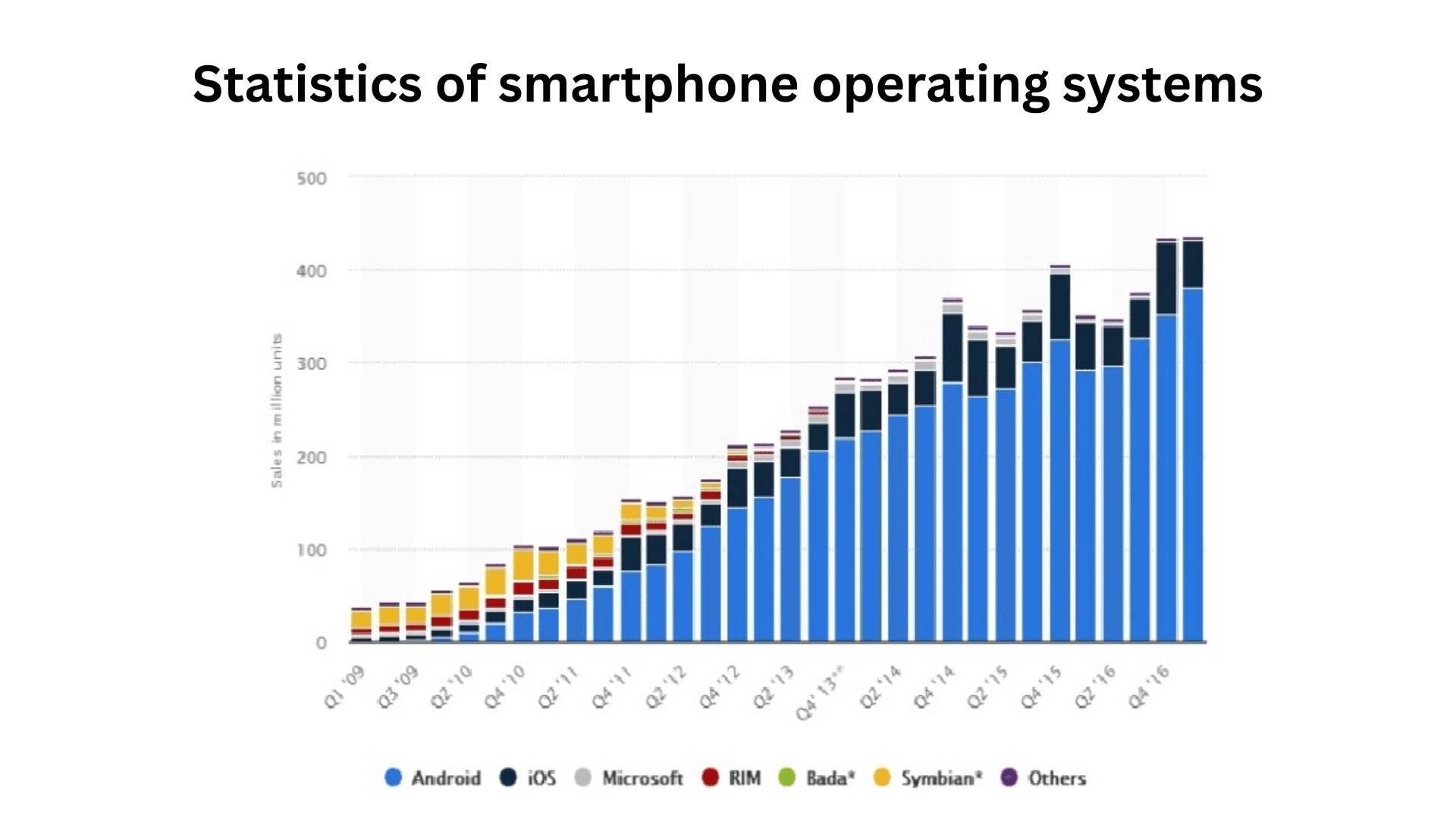
- Xiaomi transitioned from MIUI to HyperOS starting late 2023, now rolling out version 2.2 globally by mid‑2025.
- HyperOS unifies MIUI, Vela OS, car OS, and IoT OS into one architecture; phone, watch, car, and home all run the same stack.
- HyperOS 2.2 was released in China and global regions around July 2025, with preview 2.3 in testing.
- The idea is a seamless user experience across the Xiaomi ecosystem OS to rule them all, avoiding fragmentation.
- Xiaomi’s push into generative AI on HyperOS aligns with the market shift; features are overtaking foldables in buzz.
- Globally, HarmonyOS NEXT has only about a 5 percent mobile OS share, while Android still dominates around 76 percent. Xiaomi remains with Android, adding a HyperOS layer.
- They invest in OS to gain experience, reduce reliance on Google, and build ecosystem lock‑in.
- The XRING O1 chip (3 nm) plays into this custom SoC, plus a custom OS lets Xiaomi tune both hardware and software tightly.
- HyperOS supports 82 languages and spans IoT, phones, and cars, making Xiaomi’s ecosystem feel cohesive globally.
- The unified OS push underlines Xiaomi’s push from hardware to platform, a typical tech‑ecosystem move.
| OS Feature | Insight |
| HyperOS rollout | Unified OS for all devices, global 2.2 in mid‑2025 |
| AI focus | OS built for AI features, not foldables |
| Platform and chipset | HyperOS plus XRING O1 chip equals tighter integration |
R&D and Development Push
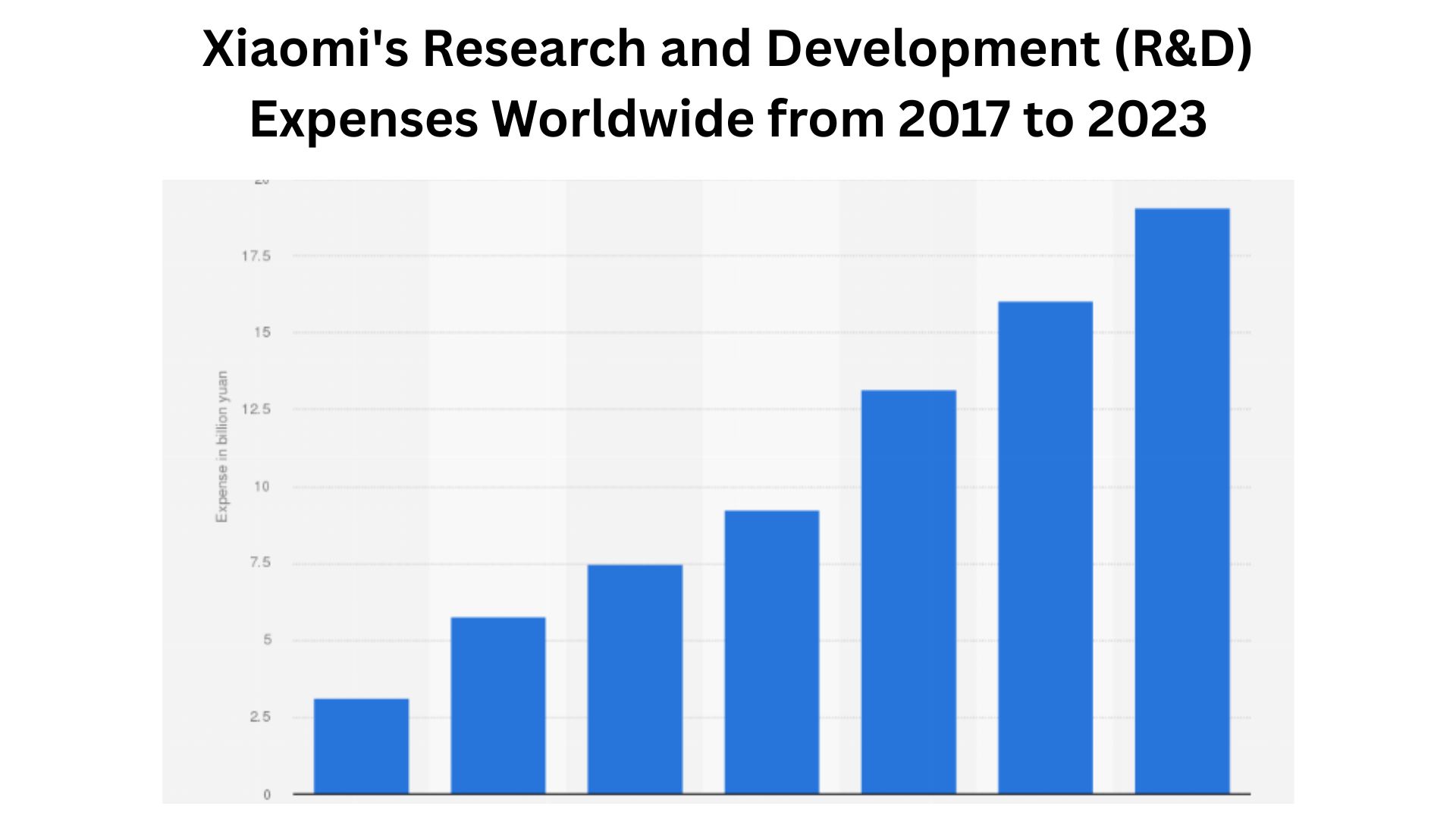
- In Q1 2025, Xiaomi spent about 6.7 billion RMB on R&D, up 30 percent YoY, reflecting a heavy focus on core tech.
- They’ve got around 21,700 R&D staff, nearly half the workforce, showing this is a serious long‑term investment.
- Xiaomi holds over 43,000 global patents, registering a pace of development across hardware, software, AI, and chips.
- Over the next five years, they committed around 200 billion RMB for basically throwing money at autonomy in chips/AI/OS.
- The XRING O1 (3 nm) and XRING T1 for wearables are milestonesXiaomi now makes its own flagship chips in‑house.
- Opened 1000-plus new offline stores in China in Q1, pushing retail alongside R&D so tech hits shelves fast.
- Expanding overseas retail, targeting 10,000 Mi Home stores globally over the next 5 years.
- Their IoT ecosystem grew to nearly 944 million connected devices, 19.3 million users with 5-plus connected devices, and science fiction-scale.
- Mi Home app saw over 106 million monthly active users, AI assistant 147 million, while services revenue climbed. This shows stickiness.
- Xiaomi’s R&D is more than phones, apps, services, and IoT, turning into an intelligence-driven user ecosystem.
| R&D Metric | Value & Trend |
| Q1 2025 R&D Spend | 6.7B RMB ( plus 30% YoY) |
| Workforce | 21.7K R&D staff (half of the staff) |
| Patents | plus43,000 globally |
| 5‑Year R&D Plan | 200B RMB investment |
Ecosystem and IoT Growth
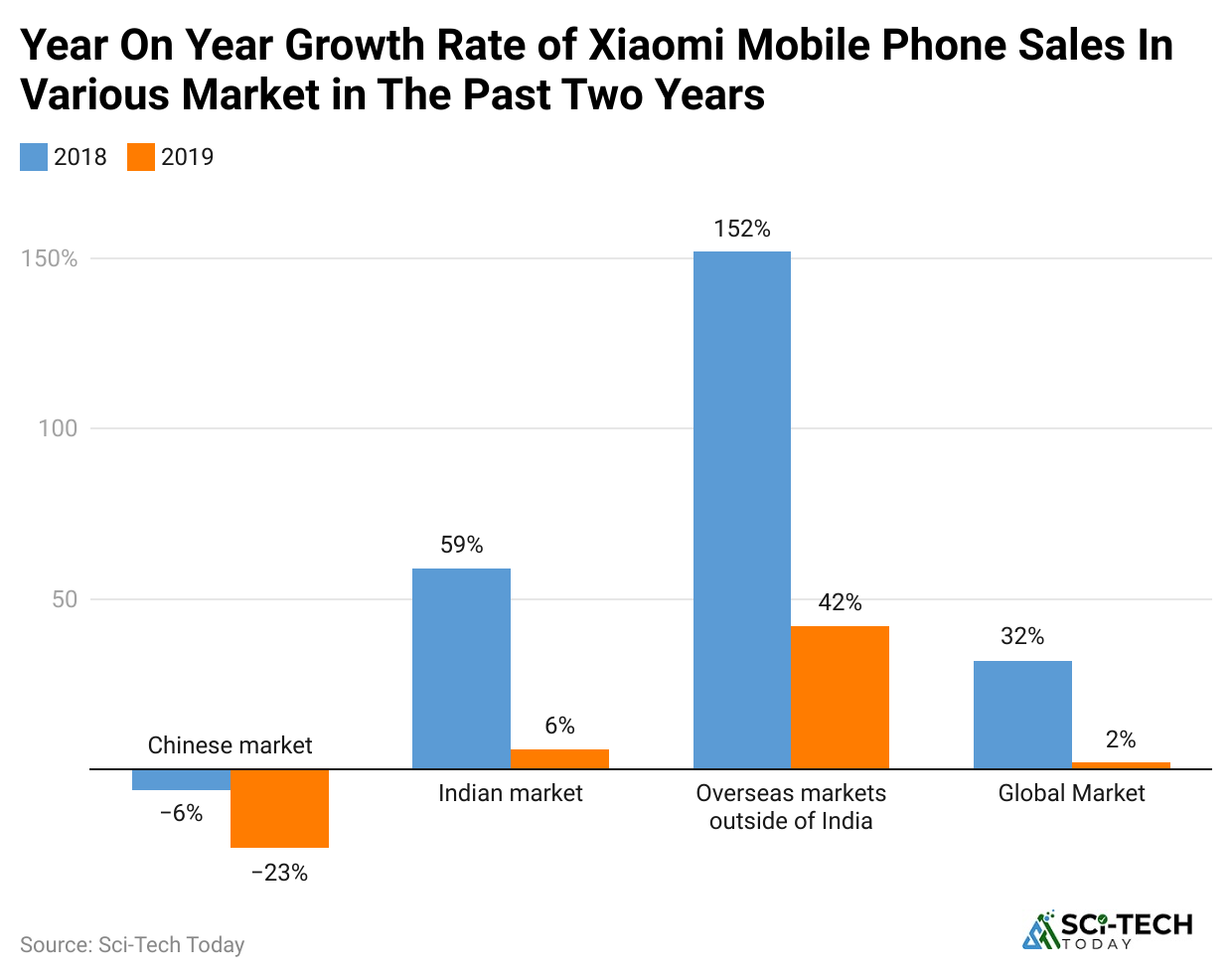
- Xiaomi’s IoT and lifestyle segment in Q1 2025 hit 32.3B RMB, a 59 percent YoY surge, showing appliances are booming.
- Gross margins in that segment hit 25.2 percent pretty impressive for hardware-heavy appliances.
- Air conditioner shipments exceeded 1.1M units (plus 65 percent), fridges 880K units (plus 65 percent), and washing machines 740K units (double last year).
- The ecosystem now ties nearly 944M connected devices (excluding phones), from smart bulbs to smart watches.
- Over 19.3M users have more than 5 connected Xiaomi devices, deep ecosystem entrenchment.
- Monthly Active Users on Mi Home app at 106M, AI Assistant app at 147 M. Services are sticky and growing fast.
- Xiaomi ranks 1 globally for smart bands and 2 for TWS earbuds, leading in the wearables category.
- Internet services revenue (apps, ads, content) hit 9.1B RMB with a 76.9 percent margin, so very profitable.
- These ecosystem revenues complement phones, cushioning hardware cycles and pricing pressures.
- Xiaomi is shaping its world by connecting everything from phones to fridges to cars under its brand umbrella.
| Ecosystem Metric | Q1 2025 Highlight |
| IoT & Lifestyle Revenue | 32.3B RMB ( plus 59%) |
| Connected Devices | 944M total, 19.3M with 5 plus devices |
| Services Revenue | 9.1B RMB (very high margin) |
Future Outlook and Strategy
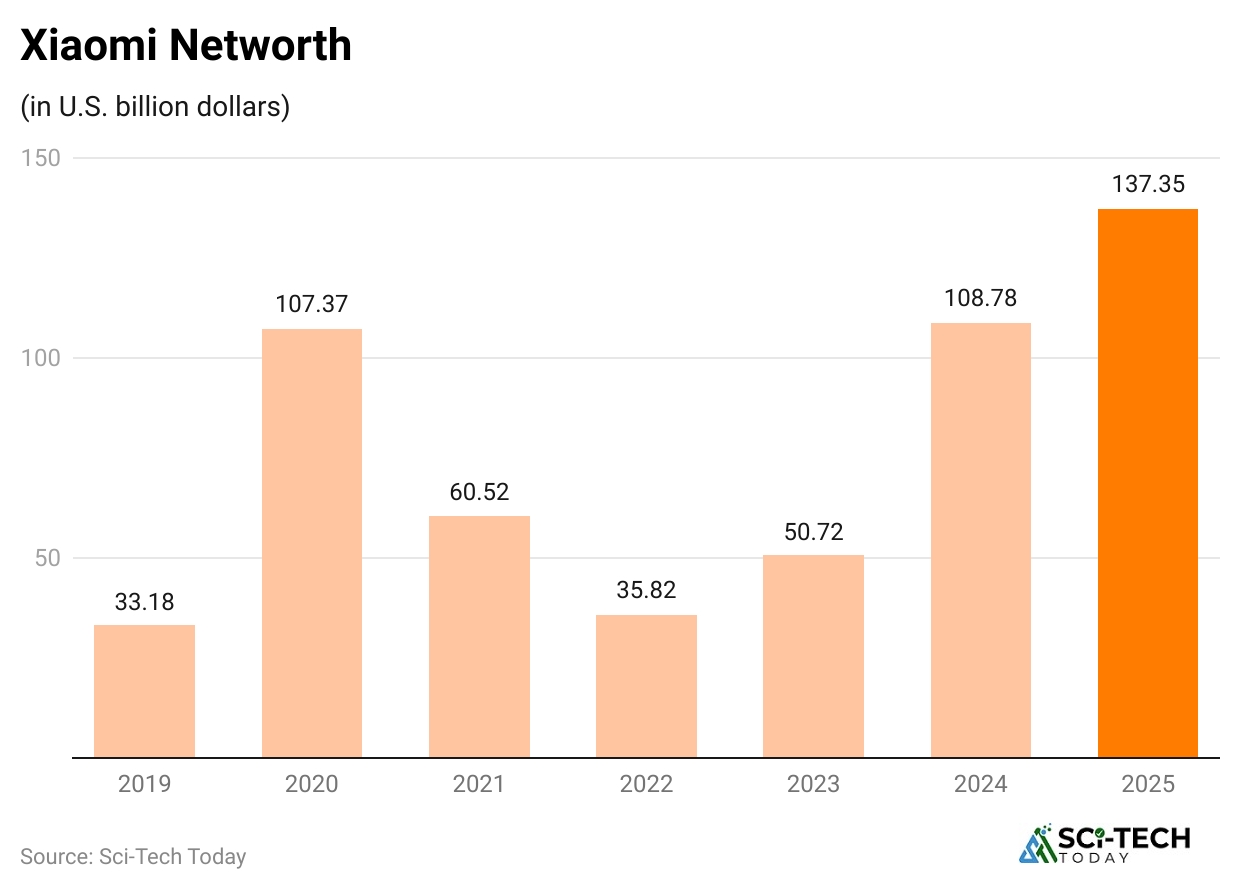
- Looking ahead, Xiaomi aims to keep climbing premium segments while holding value offerings, balancing margins, and mass volume.
- The XRING SoC family gives them chip autonomy, easier customization, and reduced dependence on Qualcomm.
- HyperOS’s AI focus positions them in line with the generative‑AI wave expected to dominate phones by 2028.
- EV (SUV) business is ramping. SUV7 sold tens of thousands, YU7 coming soonXiaomi going head‑to‑head with Tesla in China.
- R&D war chest (200B RMB) indicates they intend to play the long game in the tech race, not just hardware.
- Retail expansion offline and global Mi Home stores mean they want to rival Apple’s ecosystem feel, but at mass levels.
- India is a glitch that needs stronger activation, better premium mix, and channel trust to bounce back there.
- Globally, they’ll chase AI‑first devices, expanding beyond cameras and batteries into a smarter interface and anticipatory computing.
- Xiaomi’s future is about blending the ecosystem, services, hardware development, and premium appeal in one package.
- As a tech brand, they’re transitioning from cost‑leader to development‑leader with a system of tech, services, and ecosystem wrapped tightly.
| Strategic Area | Insight and Forecast |
| Premium Market Positioning | Xiaomi aims to balance affordability with flagship-level features to elevate brand image. |
| Chip Autonomy | With the XRING SoC family, Xiaomi gains control over component stacks and pricing. |
| AI-First Approach | HyperOS is being optimized for generative AI, aligning with future phone trends. |
| EV Business Expansion | SU7 sales are growing fast, and the YU7 SUV is coming, positioning Xiaomi in the EV market. |
| R&D Investment | A long-term 5-year R&D commitment (200B RMB) secures development in chips and software. |
| Retail Strategy | Offline and Mi Home expansions globally aim to boost brand experience and accessibility. |
| India Market Recovery | Xiaomi needs better activation and product tactics to rebound in its second-largest market. |
| Global Product Strategy | Launching AI-first devices that integrate into everyday life beyond just cameras and specs. |
| Ecosystem Integration | Building a seamless device ecosystem across phones, cars, wearables, and home appliances. |
| Brand Evolution Vision | Transforming from a value-leader to a development-driven brand with end-to-end ecosystem control. |
Conclusion
So, that’s the big picture on Xiaomi Smartphone Statistics, everything that shows how this brand went from a startup to a global tech company. From their early days launching budget phones with MIUI, to now building their chipsets, entering the EV space, and challenging Apple and Samsung, Xiaomi has evolved way beyond what most expected.
If you’ve noticed one pattern throughout the stats, it’s that Xiaomi doesn’t slow down. They move fast, push hard, and adapt quickly than most brands in the game. Whether it’s their aggressive R&D spending, the way they dominate markets like India and Russia, or how they keep launching value-for-money flagships like the Xiaomi 14, they’ve figured out how to grow while staying connected to their core audience.
And even though the smartphone market is super competitive, Xiaomi has made its place by focusing on numbers that matter: revenue, global presence, and ecosystem growth. They’ve gone from being known as the “cheap alternative” to now being one of the most serious players in the entire tech space.
So yeah, I hope you like this article. If you have any questions, kindly let me know in the comments section. Thanks for staying till the end.
Sources
FAQ.
Xiaomi sells anywhere between 140 to 200 million smartphones annually, depending on the year and market conditions. In 2023, it shipped around 146.4 million units globally, making it the third-largest smartphone vendor in the world behind Apple and Samsung.
As of 2024, Xiaomi holds roughly 18% to 21% market share in India, making it either the top or second smartphone brand in the country. India has been Xiaomi’s biggest international success, especially in the budget and mid-range categories.
Xiaomi isn’t the number one anymore; Honor and Apple have taken the lead in some quarters. Still, Xiaomi consistently ranks within the top 3 smartphone brands in China, especially strong in online sales and mid-range performance segments.
The Redmi Note series is Xiaomi’s best-seller of all time. The Redmi Note 8 and Note 10 series alone have sold over 25 to 40 million units each worldwide. These models are known for offering high specs at affordable pricing.
In 2023, Xiaomi made over USD 27 billion from smartphone sales alone. This accounts for roughly 60% of the company’s total revenue, although that share is slowly decreasing due to their expansion into EVs, wearables, and smart home devices.
Xiaomi’s global average selling price (ASP) is around USD 150 to 180, which is lower than competitors like Apple and Samsung. However, their ASP is rising steadily thanks to flagship models and more premium offerings under the Xiaomi and Redmi K series.
Xiaomi’s custom Android skin MIUI has over 600 million monthly active users globally as of 2024. It’s available in more than 90 languages, across over 100 countries, and continues to evolve with each generation.
Xiaomi is hugely popular in India, China, Indonesia, Russia, Spain, and Brazil. It’s also gaining traction in Europe and Latin America, where price-sensitive markets look for value phones with good specs.
Xiaomi operates on a low-profit margin model, often making just 5% or less from hardware. Instead, it focuses on monetizing software, ads, services, wearables, and now even electric vehicles. It’s all about volume and ecosystem expansion.
Xiaomi plans to integrate AI, custom chipsets, and satellite communication, and expand further into flagship territory. With the upcoming Xiaomi 15 series and deep investment in HyperOS and EVs, they’re not just growing, they’re aiming to reshape their identity as a full-stack tech innovator.

Jeeva Shanmugam is passionate about turning raw numbers into real stories. With a knack for breaking down complex stats into simple, engaging insights, he helps readers see the world through the lens of data—without ever feeling overwhelmed. From trends that shape industries to everyday patterns we overlook, Jeeva’s writing bridges the gap between data and people. His mission? To prove that statistics aren’t just about numbers, they’re about understanding life a little better, one data point at a time.









